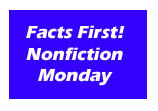That Self-Same Metal
In honor of National Shakespeare Day:
Title: That Self-Same Metal
Author: Brittany N. Williams
ISBN: 9781419758645
Pages: 344 pages
Publisher/Date: Amulet Books, an imprint of ABRAMS, c2023.
Sixteen-year-old African-Americans Joan and James Sands work for William Shakespeare’s theater, James as an actor and Joan as combat choreographer and bladesmith, maintaining and making the stage swords. Her father’s notoriety in the metal shop obviously aided in her getting this highly unique position, although her magical abilities over metal gifted by the Orisha Ogun don’t hurt either. Her family has been tied to the Orisha for a long time, and when her godfather doesn’t perform the necessary rituals with the new mortal monarch to keep the Fae at bay, it falls to Joan to figure out who to trust and how to help preserve the separate worlds.
I absolutely love it when authors identify their published works as originally written for the National Novel Writing Month (NaNoWriMo) challenge, because it shows the success a motivation can have on people who have their own book waiting to be both captured on paper and released to the world. I had never heard of the Orisha faith until Tomi Adeyemi’s Children of Blood and Bone received the huge popularity and notoriety that it did almost five years ago, which is when Brittany Williams finished her novel, so it could be said she was at the right place in the right time. Five years later, many are still working diligently to increase diversity in publishing, and this checks a number of boxes without feeling forced. The main characters are African-American, several characters are seen courting individuals of the same gender, and Joan is specifically in a bisexual love triangle that may or may not turn polyamorous in the inevitable sequel. “If you think I’m jealous of him know that I feel no such thing. […] Stop thinking about what’s proper when you can have both of us.” (208) Now how matter of fact is that!?
The swashbuckling sword play is a mighty fun read, although one scene in particular has foes trading blows in the middle of a production, interrupting the play in a way that everyone unrealistically accepts as “Is this a new addition to the script?” including the actors who aren’t in the know. A secondary character’s death is glazed over, along with several of the (as a Kirkus reviewer puts it) “periphery situations that are hard to connect to the main plot”.
For something that is supposed to be kept a secret, a remarkable number of characters are either directly involved in events or are informed at some point. In addition to being open-minded about the existence of Fae, stereotypes of the time are summarized and bestowed upon society as a whole, but all the characters we are meant to like don’t seem to follow those societal prejudices against women on the stage (Joan makes an appearance in place of her brother at one point), homosexuality, African Americans specifically and race generally (James is on stage while other characters are in black face), and religion/Catholicism. The players are remarkably progressive and that is never cleared up in the narrative. Some of these tidbits about the timeframe could have been trimmed from the story and included instead in a more thorough historical note at the end of the book.
Like my complaints in Children of Blood and Bone, the magic seems under utilized and overly explained, however I did appreciate the inclusion of Joan’s perspective when Ogun uses her as a vessel for his efforts to regain balance between the Fae and mortals. Joan is scared to death when it happens that she is not going to regain control, since like in most hero fantasy she is ill-informed and ill-prepared for it to happen and her upcoming responsibilities.
These things should not deter readers, but should be used as points of discussion and research for people that had their interest whetted by the story of the self-sufficient and spunky steel smith.














